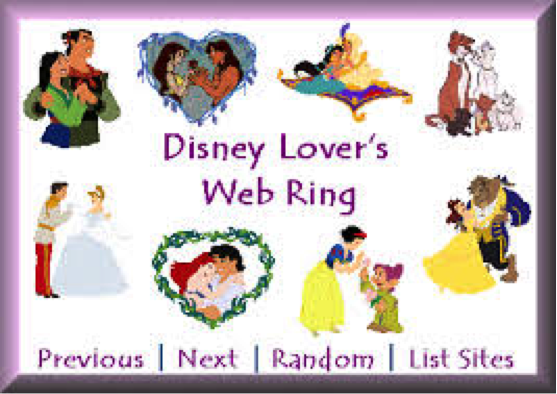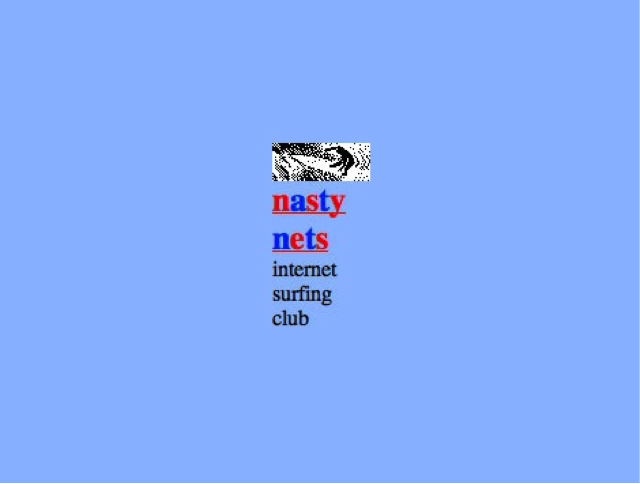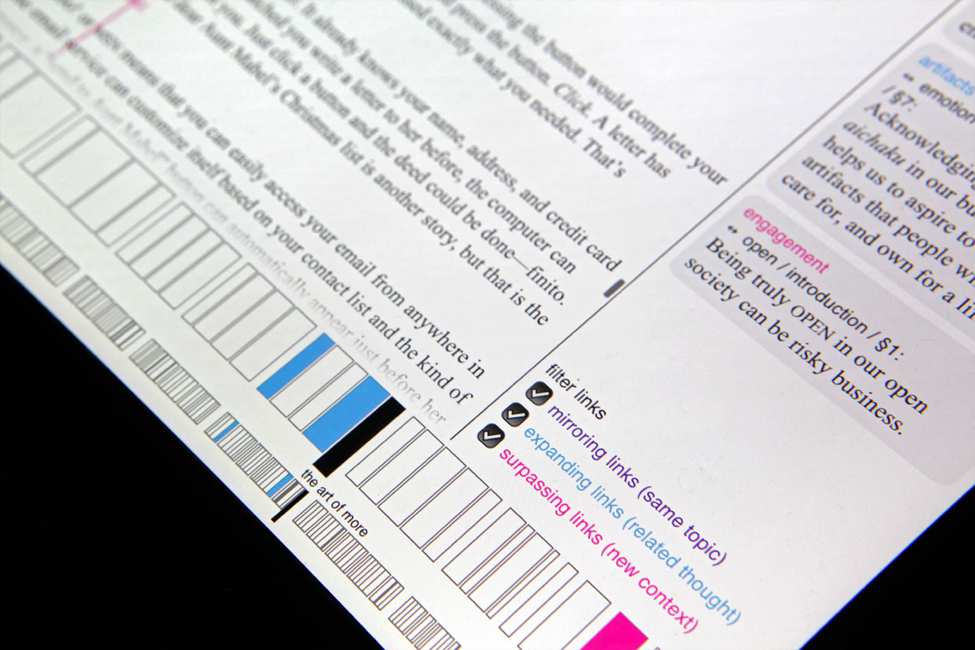Written by Inte Gloerich, Silvio Lorusso and Niels Schrader.
During our meetings we defined the primary goal of the project: to mutually broaden the involved platforms’ audiences and thus strengthen the their positioning. By creating connections between each publisher’s website, their respective audience are ideally shared.. More specifically, the method we use to achieve this goals is to create suggestions for further reading on a different platform. The general research question that is central in this project is: How can platforms benefit from each other?
Inspirations
Several formats and technologies inspired the project:
- ‘From around the web’ sections, including clickbait and promoted stories[1]
- Pre-search engines ways of creating a cluster of affinity among websites (webring, surf clubs[2])
- Web Annotation apps (Hypothesis, Genius)
- Apps for listing references like Delicious.
- Old and contemporary efforts to decentralize web and social media (p2p, federation, dat)[3]
- Semantic web
Typology of hyperlinks
Niels Schrader defined different categories of hyperlinks. While the categories are useful to us, instead of discussing hyperlinks, we talk about links in general, including more conceptual connections or references. In order to achieve the goal of connecting the platforms, we focused on the links between articles asking ourselves the following question: what’s a good link?
Niels suggested a categorization of hyperlinks based on their ‘gender’, i.e. the context they are embedded in:
- content mirroring (linking to the same topic)
- content enhancing (linking to a related thought)
- content surpassing (linking to content that shifts the meaning)
Additionally, links can be categorized according to their direction.
- uni-directional (e.g. from the ToC to other parts of a book, one to many relationship, edited)
- bi-directional (e.g. many-to-many relationship, automated)
Bi-directional hyperlinks express a high level of trust since they indicate mutual interest and engagement.
De Correspondent has also done some work on categorizing links here.
We used Niels categorization to reflect on the article level and this is why we felt the need to define the relationship existing between linked content. Another question that emerged from this is about authority: who should be able to insert the link, the author or the editor?
Type of relationship between articles/content
We could define a spectrum of ‘content relatedness’. This would go from fully unrelated (e.g. random article shown) to strictly related (e.g. response to the article). The group discussed the different types of conceptual connections that can exist between articles:
- author (the individual), type of author (student, established philosopher, etc. We also question whether this matters / is useful), and author background (although no everyone would want this to be visible)
- keywords
- geographic area about which is written (should be quite specific, eg. de Bijlmer)
- time of publishing, time discussed in the article
- discipline (philosophy e.g.) (We doubt whether this would even be better than a random link, what does it really say about an article?)
- genre & formats (image, longread, interview, review, column, videos)
- materials discussed in the article
- common references between articles
- common references in the past between specific authors
- made up words, what would the spell check mark as an error? (e.g. entreprecariat, response-ability) These might be central to a new theory and not yet recognized.
What is a good link for us
Each publisher came up with their own definition of what a good link.
Open!
A good link is a link that provides the reader with meaningful extra information, context and insight on (an aspect of) the text, the subject matter of the text or the writer of the text. The text linked to and the platform it is published on should be reliable and of high and trustworthy quality according to the editorial standards of Open!. Or if not, then there should be an obvious (for the reader) reason for this. If the link is offered to the reader without any explanation, the connection between the texts or between the text and another source of information (news, event, history) should preferably become clear in one glance. The author of the ‘mother text’ decides about creating a link. The editor of the text can propose a link.
UNStudio
For us, the best links are, in descending order of priority
- relevant to the topic that is being discussed
- relevant to the typology that contextualizes the topic of discussion (urban, product, hospital, cultural building, educational building, etc.)
- genre: Podcast / series / interview etc.
Amateur Cities
Among the options you suggested to have the same broader topic (like ‘brutalism’ or ‘media art’) is the most relevant to us. However we think there should be a sub-category that makes it more specific. Eg. If I read an article about the Barbican (broad topic = ‘brutalism), I would like to see more articles about the Barbican (sub-category = Barbican) or where the Barbican is mentioned and not about another building. Regarding the rest of the possibilities you mention, we actually think it’s better if it’s not written by the same person. Finally, regarding genre, things can be somehow complicated in the sense that some genres fit well with each other while some others don’t. For example, if I read an essay, I wouldn’t mind switching to an interview, but I wouldn’t like to see a news piece.
Most of the definitions are somewhat centered on the content of the single article, so questions emerge around the authority of who can insert links and who has control on the context this info appear within (author or editor?). If the link is embedded within an article, the author should be involved. If not, if it’s about the platform and its context, then its editors. This should also be made clearly visible. The reader should be aware if a link is added by the author or by the editor.
Link and Box
If you think of a hyperlink, you imagine something relatively undesigned: an underlined piece of text. What we are suggesting here is giving up space to outside content. This space and the content hosted needs to be designed in some ways. Therefore, by link we mean both the actual connection to a different page and the hosting of external content inside the website. To put it differently:
The link brings you somewhere
The box delivers something to you
Editor and machine collaboration
We discussed the possibility that an editor might want to select different kinds of links for different kinds of articles. This should be a decision that the editor can make anew each time. We imagined a kind of input field with slides to indicate the importance you want to give to a specific category. For example, for a highly localized article on de Bijlmer, you might want to give preference to other articles on de Bijlmer, instead of including articles of a similar type (review, podcast, etc).
Risks
The group highlighted some of the risks related to focusing on building up relationship based on links: while it might seem useful to connect multiple data and information between platforms, the link can prevail over the content. Novel connections do not automatically produce new knowledge; if that is the case the user/editor might fall into a linked data ‘vertigo’ or ‘paranoia’ where everything apparently makes sense but nothing is actually meaningful.
[1] https://www.nytimes.com/2016/10/31/business/media/publishers-rethink-outbrain-taboola-ads.html
[2] Wikipedia defines a webring as ‘a collection of websites linked together in a circular structure, and usually organized around a specific theme, often educational or social’. Rhizome defines surf club as ‘a term that has been used to describe collaborative artist-run blogs’.
[3] See “Torrent-like Publishing” by André Fincato: https://networkcultures.org/makingpublic/2018/11/19/torrent-like-publishing/





